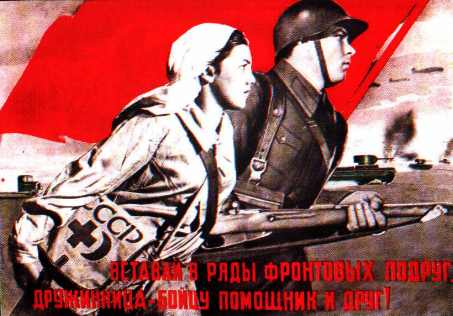"Do Your Best... Be At Your Best".
 There were three primary ways that women contributed to the war efforts, and which media promoted through advertisements, handbills and movie shorts. The first was in association with the military when women filled military jobs left open by the draft.
There were three primary ways that women contributed to the war efforts, and which media promoted through advertisements, handbills and movie shorts. The first was in association with the military when women filled military jobs left open by the draft.The second was the farm women and housewives who fought the war from their kitchens and gardens. Labour that was promoted especially with the Victory posters.
The third way that women contributed was their work in the heavy industries. The media embodied women in the famous illustration: "Rosie the Riveter''. Although women had worked in factories since they had been founded in the early nineteenth century, a gender-segregated labor market channeled women into jobs then considered more appropriate to their presumed skills.
As an international student, I'd like to compare it with Russian war propaganda. In Soviet advertising, women were shown fighting side by side with the men. And there were also many images of women, doing men's jobs, while the men where out in war. One could say that it was comparable to feminism – the thought that women should have the same rights and not only be stuck in the kitchen.


Thus, during World War II, «…women become the chief iconographic deliverers of this exhortation, and the woman war worker, in particular, was the principal symbol of national unity and industrial mobilization» (Remembering Rosie: Advertising Images of women in WWII, Maureen Honey).


1 Comments:
A very good post, and a nice comparison to Soviet images from the same era. The Soviet Union had an even more urgent need to mobilize women during the war, including women in combat roles because the war was actually fought on Soviet territory and until the tide turned during the battle for Stalingrad the need for everyone to contribute to the war effort was desperate. There is nothing like the threat of foreign conquest to change peoples ideas about gender roles. That said, socialist ideology has always been more progressive about gender equality, even in patriachal societies.
You have chosen an important quotation from Honey: "the woman war worker, in particular, was the principal symbol of national unity and industrial mobilization." I think that she is right to emphasize the importance of the symbolism of the image of woman in wartime propaganda.
Post a Comment
<< Home